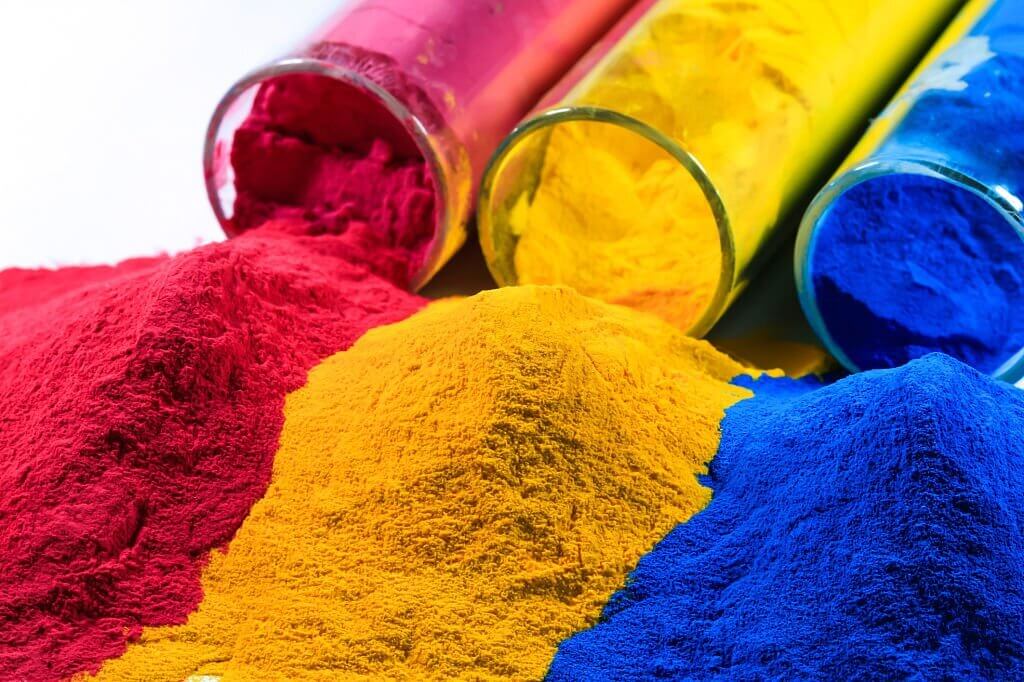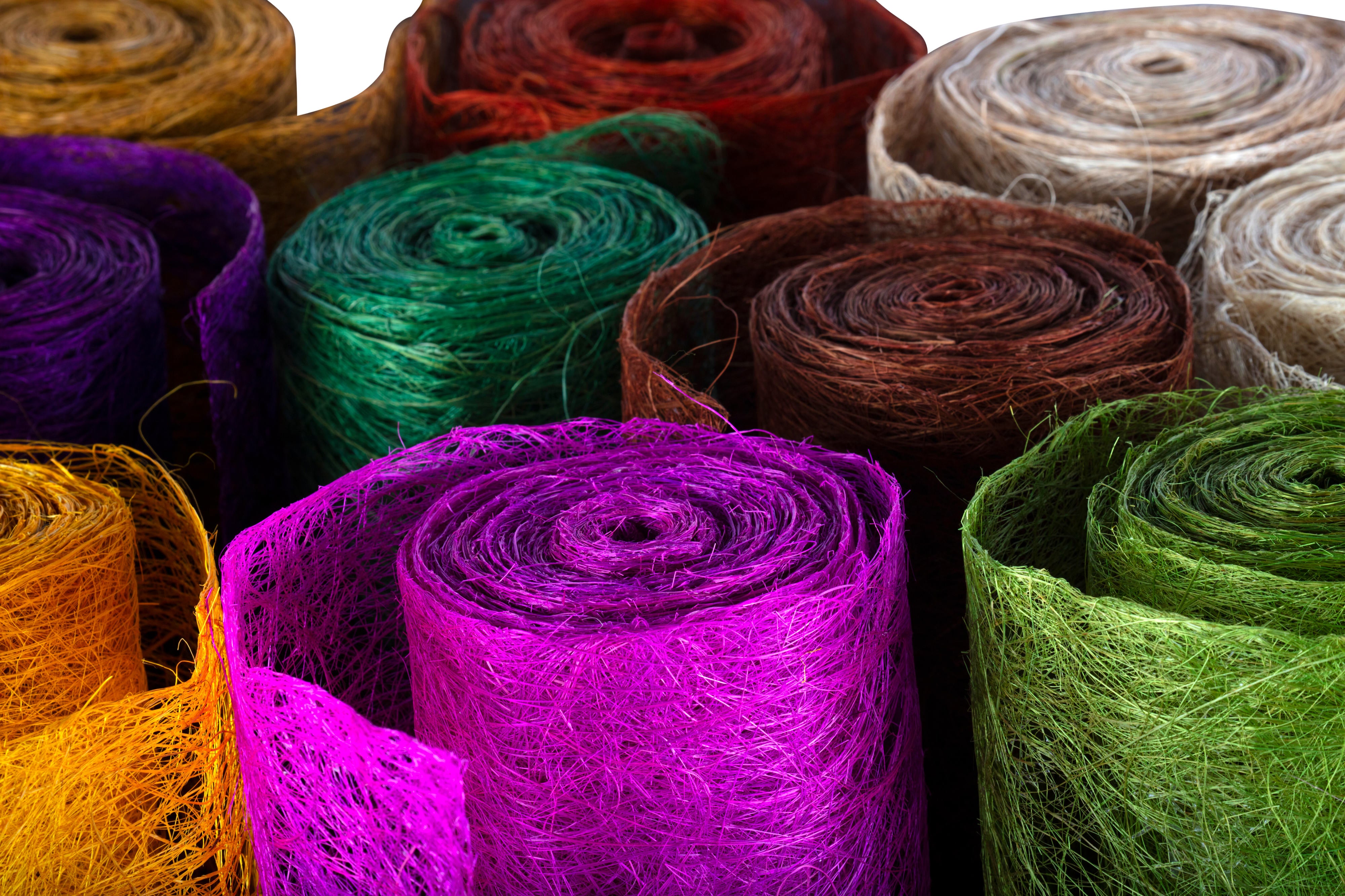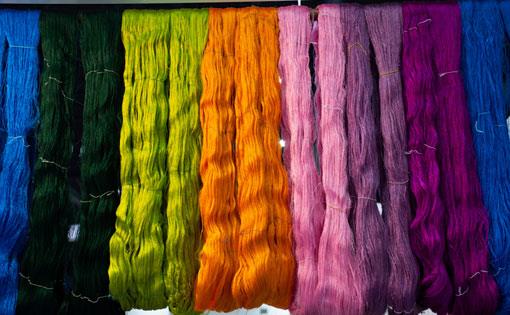
Acid Dyes
Acid dyes are water-soluble synthetic dyes that bond ionically with protein fibers such as wool, silk, and also with synthetic fibers like nylon. These dyes require an acidic dye bath, typically with a pH of 4–6, to ensure proper fixation. Once applied, the dye molecules form strong ionic attractions with the fiber’s amino groups, resulting in vibrant shades and good fastness properties. Acid dyes are widely used in the textile industry for coloring delicate fabrics and garments that require bright hues and soft hand feel.
| Property | Chemical Details | Application Info | Compatibility | Fastness | Standards & Storage |
|---|---|---|---|---|---|
| Product Type | Acid Red 18 | Azo-based acid dye | Wool, Silk, Nylon | Wash: 3–4 Light: 5–6 |
Store in dry, airtight containers |
| Molecular Structure | C.I. Acid Red 18: C20H13N2NaO4S | Water-soluble anionic dye | Protein & polyamide fibers | Bleach Resistance: Low | Shelf Life: 1–2 years in cool, dry place |
| Fixation Type | Electrostatic/Ionic Bonding | Uses Acetic or Formic Acid | Bonds with amino groups in fibers | Rubbing Fastness: 3–4 | REACH & OEKO-TEX Certified |
| Temp. Requirement | 60°C – 100°C | Ideal for exhaust acid dyeing | Compatible with jet & soft flow dyeing | Heat Stability: Moderate | Protect from direct sunlight & humidity |
| Application Segment | Apparel, Carpets, Upholstery | Exhaust, Pad, Printing | Silk scarves, wool garments, nylon hosiery | Durability: Medium to High | Store in moisture-free packaging |
| Solubility & Form | Fine Powder (Water Soluble) | Dissolves easily in warm water | Works best in acidic pH (4–5.5) | Bath Stability: Very Good | Do not store below 5°C |
| Product Name | Chemical Class | Dyeing Temp (°C) | pH Range | Fixation Method | Common Applications |
|---|---|---|---|---|---|
| Acid Red 18 | Azo Acid Dye | 80 – 90 | 4.0 – 5.5 | Acetic Acid Fixation | Wool scarves, silk fabrics |
| Acid Blue 113 | Anthraquinone-Based Acid Dye | 70 – 85 | 4.5 – 5.5 | Formic/Acetic Acid Addition | Silk garments, nylon textiles |
| Acid Yellow 42 | Azo Type Monoazo | 60 – 75 | 4.0 – 5.0 | Buffer Bath (Acetate) | Nylon hosiery, fashionwear |
| Acid Orange 7 | Azo Dye | 80 – 90 | 4.0 – 5.0 | Acid pH Fixation | Woolen apparel, blends |
| Acid Violet 17 | Triphenylmethane Dye | 70 – 85 | 4.5 – 5.5 | Acidic Buffer (Sodium Acetate) | Silk sarees, fashion dyeing |
| Acid Black 210 | Mixture Type Acid Dye | 85 – 95 | 5.0 – 6.0 | Formic Acid Stabilization | Carpets, wool blends, upholstery |
Acid dyes are a specialized class of water-soluble dyes primarily used for dyeing protein-based fibers like wool, silk, and nylon. These dyes form ionic (electrostatic) bonds with the amino groups in fibers under acidic conditions, resulting in brilliant, vibrant colors with excellent leveling properties. Due to their wide color range and high affinity for protein fibers, acid dyes are extensively used in the fashion, carpet, and upholstery industries.
From a chemical engineering standpoint, acid dyes are applied in an acidic pH range of 4.0 to 6.0, using auxiliaries such as acetic acid or ammonium sulfate to control pH. Dyeing temperatures generally range between 60°C to 100°C, depending on the dye type (Leveling, Milling, or Super Milling). Application techniques include exhaust dyeing, padding, and printing processes. These dyes provide good wash and light fastness on wool and nylon, making them suitable for apparel, home furnishings, and industrial textiles.
Storage and handling of acid dyes should be in a cool, dry, and well-ventilated environment to prevent clumping or degradation. They typically have a shelf life of 1–2 years when stored properly. Many commercial acid dyes comply with environmental and safety regulations such as REACH and OEKO-TEX. Chemical engineers play a crucial role in optimizing dye bath conditions, minimizing effluent loads, and improving dye fixation efficiency to promote sustainable textile dyeing operations.
Our Lab Gallery



If you would like to get in touch with JP Global, there are several convenient ways to reach out. You can contact us directly via phone or email for any inquiries, partnerships, or support. Additionally, our contact form on the website allows you to submit your queries quickly. For urgent matters, we recommend calling during business hours. Follow us on social media for updates, or visit our office at the listed address to speak with our team in person.
You can view the complete list of our products by visiting the "Products" or "Catalog" section on our website. We regularly update this section with the latest offerings, specifications, and availability. If you prefer, you can also request a digital or printed catalog by contacting our support team via email or phone. For bulk or customized product inquiries, our sales team is always ready to assist you directly.
JP Global collaborates with a wide range of trusted industrial partners across various sectors including manufacturing, logistics, energy, and technology. Our key partners include leading suppliers, global manufacturers, and certified service providers who share our commitment to quality, innovation, and customer satisfaction. These collaborations enable us to deliver reliable solutions and maintain high industry standards in every project we undertake.





















